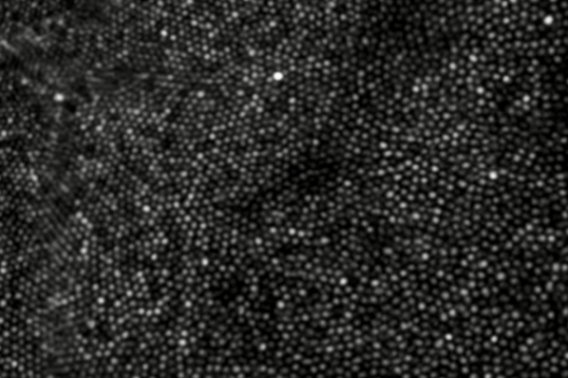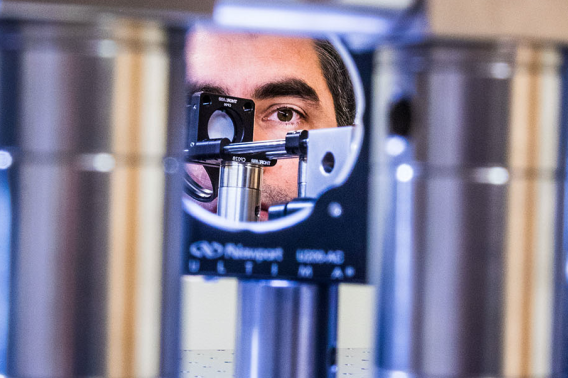Adaptive optics technology makes it possible to obtain cellular-level images of the retinas of human subjects — using techniques developed by astronomers to resolve distant stars from ground based telescopes.
The technology, developed by Visualization Lab adaptive optics facility director Alfredo Dubra, PhD, works by automatically correcting for the ever-changing optical properties of the eye — as well as involuntary eye movements — enabling micron-scale visualization of the retina’s mosaic of photoreceptors and even individual blood cells moving through the retinal vasculature. Collaborators at Stanford and across the world are applying this technology to better understand the retina, to develop early detection systems for blinding diseases, and to track the outcomes of novel treatments in clinical trials.
Dr. Dubra is currently building a new adaptive optics rig in the Visualization Lab at the Wu Tsai Neurosciences Institute — replicating the existing rig housed in the Dubra lab at the Stanford Byers Eye Institute in Palo Alto. The new adaptive optics facility in the Stanford Neurosciences Building will be available for collaborations with researchers across campus interested in the anatomy and function of the human retina in health and disease.
Trainees and collaborators interested in applications of this tool should contact Dr. Dubra directly to discuss potential projects.
Coverage of Dr. Dubra's Adaptive Optics Technology

One Cell at a Time: Focusing on the future of precision health through adaptive optics
Stanford Dept. of Opthalmology Annual Report

Eye spy: Looking inside the eye with technology once turned to the sky
Stanford Medicine magazine
